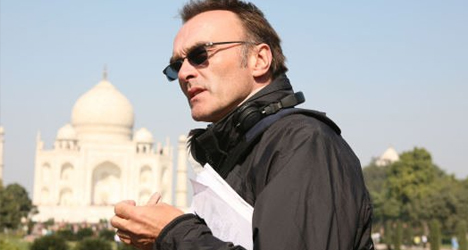The idea that life is predestined was a strange concept for British director Danny Boyle to wrap his head around until he began filming his newest feature, “Slumdog Millionaire.”
“I was very skeptical about [destiny] before I started filming ‘Slumdog,'” Boyle told me during a phone interview last month. “I thought it was something that made people very passive and accepting of the way things are. It doesn’t work like that, though. It’s a much more cohesive force that binds everybody together.”
While shooting “Slumdog,” Boyle found he was connected in a profound way to the more than 13 million people living in Mumbai (formerly Bombay), the city in India where the film is set. He saw the economic gap between those living in the slums and those who lived a more stable life by taking advantage of the country’s booming market. The citizens of Mumbai, Boyle says, were one despite destiny’s separate plans for them. Though he was an outsider, Boyle said he, too, became a part of their integrated world. His skepticism about fate slowly diminished during the year he spent there filming the story of Jamal Malik (Dev Patel), a teenager from the slums of Mumbai who relies on destiny to help him find a long-lost love while competing to win the grand prize on the Hindi version of “Who Wants to be a Millionaire.”
Last week, Boyle earned Best Director accolades from the film-critics associations in Los Angeles and Washington, D.C., and the National Board of Review D.C. critics also named “Slumdog Millionaire” the Best Film of 2008.
I read you actually almost turned down the opportunity to direct this film.
I didn’t know if I wanted to make the film because it was first described to me as a film about the TV show “Who Wants to Be a Millionaire,” and I felt very ambiguous about that. Although I compulsively watched the show like everyone else, especially since it started in Britain, I wasn’t sure about it because they take ordinary people and dangle staggering wealth in front of them. Most of them aren’t going to win it. Then they humiliate people even when they are very good-natured. So, I wasn’t sure it was really my thing.
What finally made you overlook the vague description first pitched to you?
There was a wonderful story attached to it. The show is just a device to get to the real story. Also, setting it in India was interesting because there is contrast between the country and the money the show offers. In India — in terms of the cost of living — it’s the biggest cash prize in the world. There is contrast between that and half the population living in the slums. It’s that extreme difference that makes it such a gift for a storyteller.
I can remember when the $5,000 slot on “Wheel of Fortune” was considered a lot of money. Now, you can go on a game show and become a millionaire overnight.
I know. I remember when they launched it in Britain. You could win a million pounds! It was almost like a joke. They had to pass special legislation in Parliament to permit it because it was so beyond anything that had ever been offered on a game show. [“Who Wants to be a Millionaire”] lifted [game shows] into a different world.
And now the show is getting more global. I just read Afghanistan recently launched its own version.
It’s unbelievable, I know! It’s an incredible world. No matter what is happening people want to play these games.
Since this was the first film you’ve ever shot in India and since you knew you were going to dip into the talent pool of Bollywood, were there any doubts about anything since it was all so unfamiliar?
Well, the biggest worry was that I thought no one would recognize anyone in the movie. Anil Kapoor is a very famous Bollywood star, but you worry no one in the U.S. or U.K. will know anybody. But that’s part of the appeal. It is something fresh and different. The country itself feels very young like [Jamal]. It gives the story a different dynamic.
“Slumdog Millionaire” opens in Mumbai in January. Did you feel a sense of responsibility to the city to capture their culture, people, and way of life correctly, especially since you are an outsider?
Yeah, you are definitely aware that you are a Westerner going in. The only way to do it is to fling yourself into it as subjectively as possible. You don’t go in with any attitude or objectives beyond the emotion of the story. That’s the technique I had to use. It’s a very bustling city full of energy and life and stories. It’s got this growing economy and this heightened sense of their role in the world.
What about filming in the slums? I have a hard time believing if you walked unannounced into a housing project or extremely poor neighborhood in the U.S. with a camera crew you would get much support, especially if the people who live there think you’re exploiting them.
We took a very small crew, and the rest were local Bollywood people who grew up there. They knew we were making the right kind of film. They didn’t want us to portray them in a pitiful way. They are poor, but they want to have dignity. They don’t want to be objects of people’s pity. [The slums are] a great resource for a filmmaker. If you go in not trying to change it or organize it too much, it gives you all this free stuff. Everything is naked on the surface. There are all these extreme and shocking elements to it and you have to get your head in line to get the best parts of it. Mumbai reminded me of the first time I went to New York. It’s a city that shakes you by the neck. You can feel it in every molecule you breathe.


